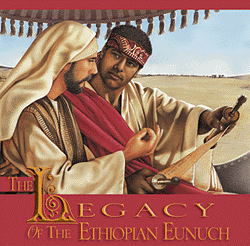Home | About Us | Directions | Bulletins | Sermons & Audio | Cross Of Christ Studies | Classes | Student and Parent Resource Page | Dangers Facing the "Non-Traditional"
An "Extra" Day?
by Marc W. Gibson
This year is a “leap” year and this month has a “leap” day. February 29th only appears on our calendars once every four years. Those born or married on this day celebrate the actual day every four years. Why does this happen?
This system began in ancient times in an ongoing effort to construct a calendar that would mark time as accurately as possible. The ancient Egyptians figured out that the solar year (the amount of time it takes the earth to revolve around the sun) was very close to 365 days. Egyptian astronomers later came to realize that the solar year was actually ¼ of a day longer than 365 days. In 238 B.C. Ptolemy III ordered a leap-year system by adding an extra day to the calendar every four years. Julius Caesar also reformed the Roman calendar by running a cycle of three 365-day years followed by a “leap” year of 366 days (source: Calendar, David Ewing Duncan). This system employing a 365 ¼-day year is the basis of our calendar today. The extra day added to the calendar every four years is done to make up for the four “quarter days” left over from those four years.
Now that’s the technical explanation for today’s spot on the calendar, but the fact remains that we have an extra day this year. Though we cannot turn the clock back and regain lost time, we can appreciate even more the time we do have on this earth. What will you do with an “extra” day this year? Will having 366 days this year mean you will get more done to improve your life here and increase your hope for eternity? Or will it be just another 24 hours wasted? As we grow older, time should become more precious. “See then that you walk circumspectly, not as fools but as wise, redeeming the time, because the days are evil” (Ephesians 5:15-16). Let us be thankful for today, because it is another opportunity to obey and glorify God. What will you do today?
Other Articles
2 John 9 - An Abused Passage
2 Peter 3 and New Creation Theology
A Leadership Crisis
Changing the Mission of the Church
Placing Membership
A Healthy Church









